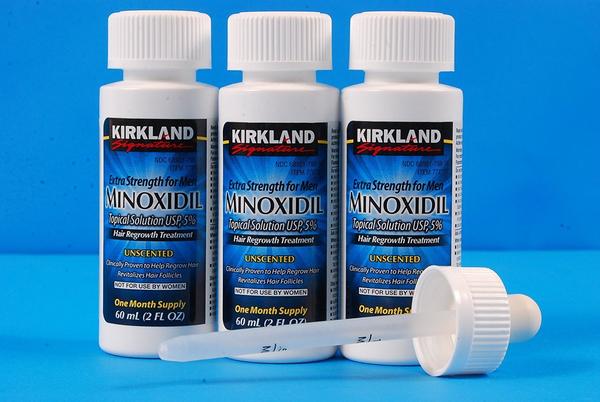If you’re someone looking for help growing a beard, you’ll likely find yourself coming across Minoxidil. It’s a popular over-the-counter drug that promotes hair growth and its designed to help people suffering from androgenic alopecia.
If you’re someone looking for help growing a beard, you’ll likely find yourself coming across Minoxidil. It’s a popular over-the-counter drug that promotes hair growth and its designed to help people suffering from androgenic alopecia.
However, even if you don’t suffer from this form of hair loss, you can still have quite a difficult time growing facial hair. Minoxidil has become one of men’s go to drugs for help growing a beard but is it safe to use for this purpose?
The Medical Uses of Minoxidil
Minoxidil should only be applied topically in areas you’re lacking hair growth and in which you wish to grow more hair. It’s safe for both men and women to use this drug, but it’s important to be careful where you apply it.
While it can be a powerful form of hair growth for those it works on the success rate is around 40%. Additionally, it can take 3-6 months to begin seeing signs of success. This can make it difficult for people to stick with and it can be discouraging to wait this long if you don’t see results.

There are other supplements out there that promote facial hair growth, but they’re not going to be as strong a solution compared to Minoxidil.
If you do have a form of medical hair loss issues and have success with Minoxidil you will need to continue using the product to maintain and support your hair follicles. For those using the drug without a medical condition for hair loss, you’ll be able to stop using it as soon as you achieve the results you’re after.
Possible Side Effects
Generally, Minoxidil doesn’t cause any problems for most users, but there can still be side effects. The most common of these side effects is burning or irritation of the eye, itching, redness, irritation of treated area, and unwanted hair growth elsewhere on the body.
The far less common allergic reactions include rash, hives, itching, difficulty breathing, tightness in the chest, swelling of the mouth, face, lips, or tongue, chest pain, dizziness, fainting, headache, sudden weight gain, or swelling of the hands and feet. These allergic reactions are rarely encountered but are still a possibility.
The last common side effect of topical Minoxidil is temporary hair loss. Manufacturers note that hair loss from Minoxidil is a part of the shedding process and shouldn’t make you feel alarmed.
The large list of possible side effects may make using the drug appear daunting, but do keep in mind this is the case with the majority of any over-the-counter drug. A very small amount of people experiences any of these side effects and most people don’t experience any side effects at all.
How Does Minoxidil Work?
The complete process of how Minoxidil promotes hair growth from start to finish is not 100% understood. We know that it’s a potassium channel opener that effects cell membranes of hair follicles.
Depending on the phase of your hair growth, the initial reaction will be different. This is where some people experience the hair shedding we mentioned earlier. Hypothetically, Minoxidil works by allowing more oxygen, blood, and nutrients to your hair follicles. This promotes thicker hairs during the new anagen phase (beginning phase) of hair growth.
How to Use Minoxidil
When you make your purchase, the box will come with general use instructions. Make sure to follow these instructions to see best results. What the box doesn’t tell you is the best places to use the drug, in detail.
Allow me to help you avoid a common mistake others have made. When you’re applying Minoxidil only apply it to small areas where you need hair growth. The most common spots are beard bald patches or the edges of your mustache to connect it to your beard.
The instructions on the box are for use with small surface areas. So, keep that in mind if you’re trying to cover a surface area larger than 2” inches in width. Do not apply Minoxidil on surfaces where you don’t need help growing hair. It shouldn’t be used like beard oil, but instead as a spot treatment.
Avoid using other beard products such as beard oil, pomade, or even external use items like combs or straighteners while Minoxidil is applied. This can cause the drug to move into other areas and cause it to be less effective.
Is It Safe to Use Overall?
Yes, Minoxidil is overall safe to use, but you should ask your dermatologist if you have any concerns or skin conditions. It’s a key ingredient in products like Rogaine and is very effective at helping you grow hair in difficult areas.
If you experience a side effect, stop using Minoxidil and seek a medical professional’s opinion before continuing your usage. Even though only roughly 40% get to see results, it is worth giving a try if you need help growing facial hair.
Editor’s note: This article is provided as a source of information to our readers. Legal Reader does not diagnose or suggest possible treatments for health problems.


Join the conversation!